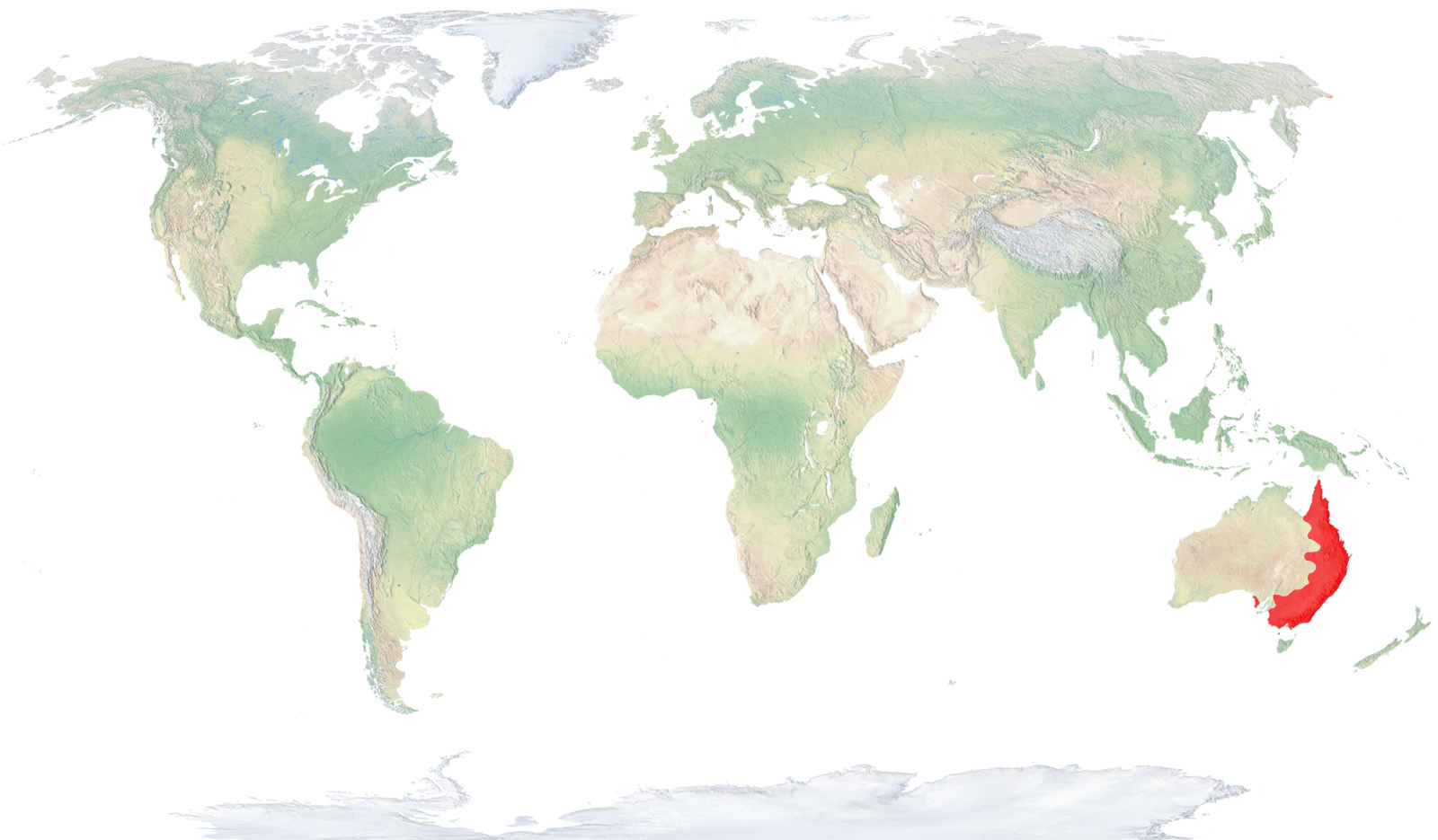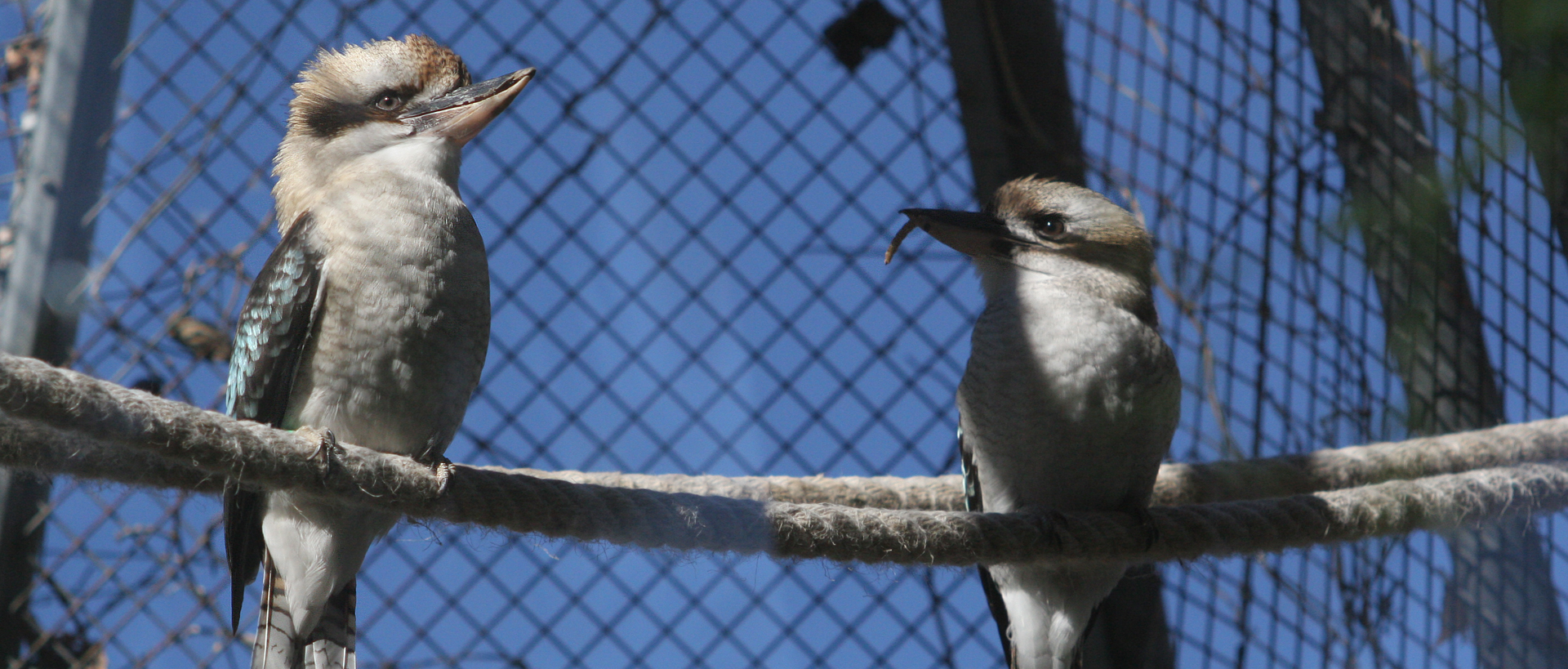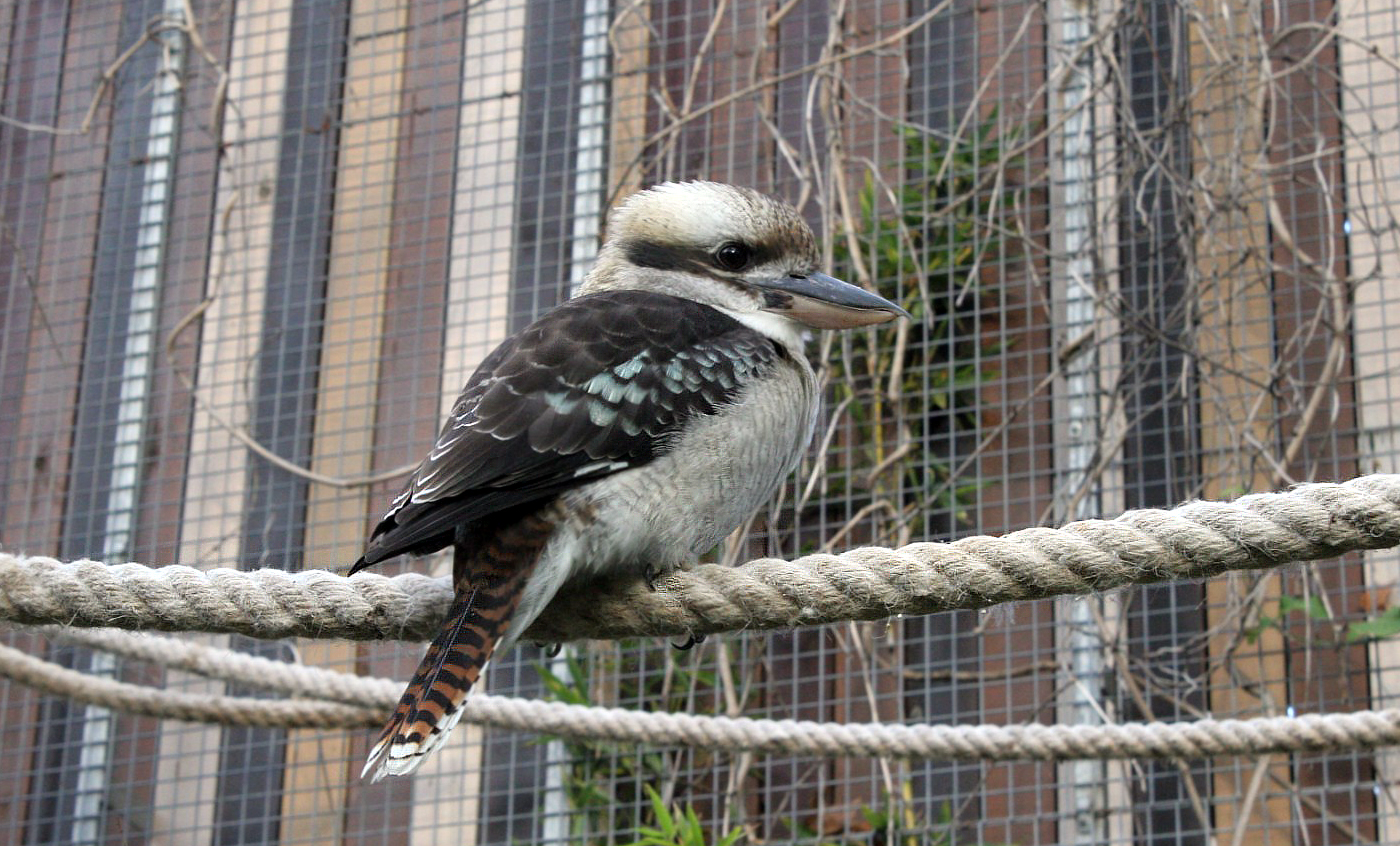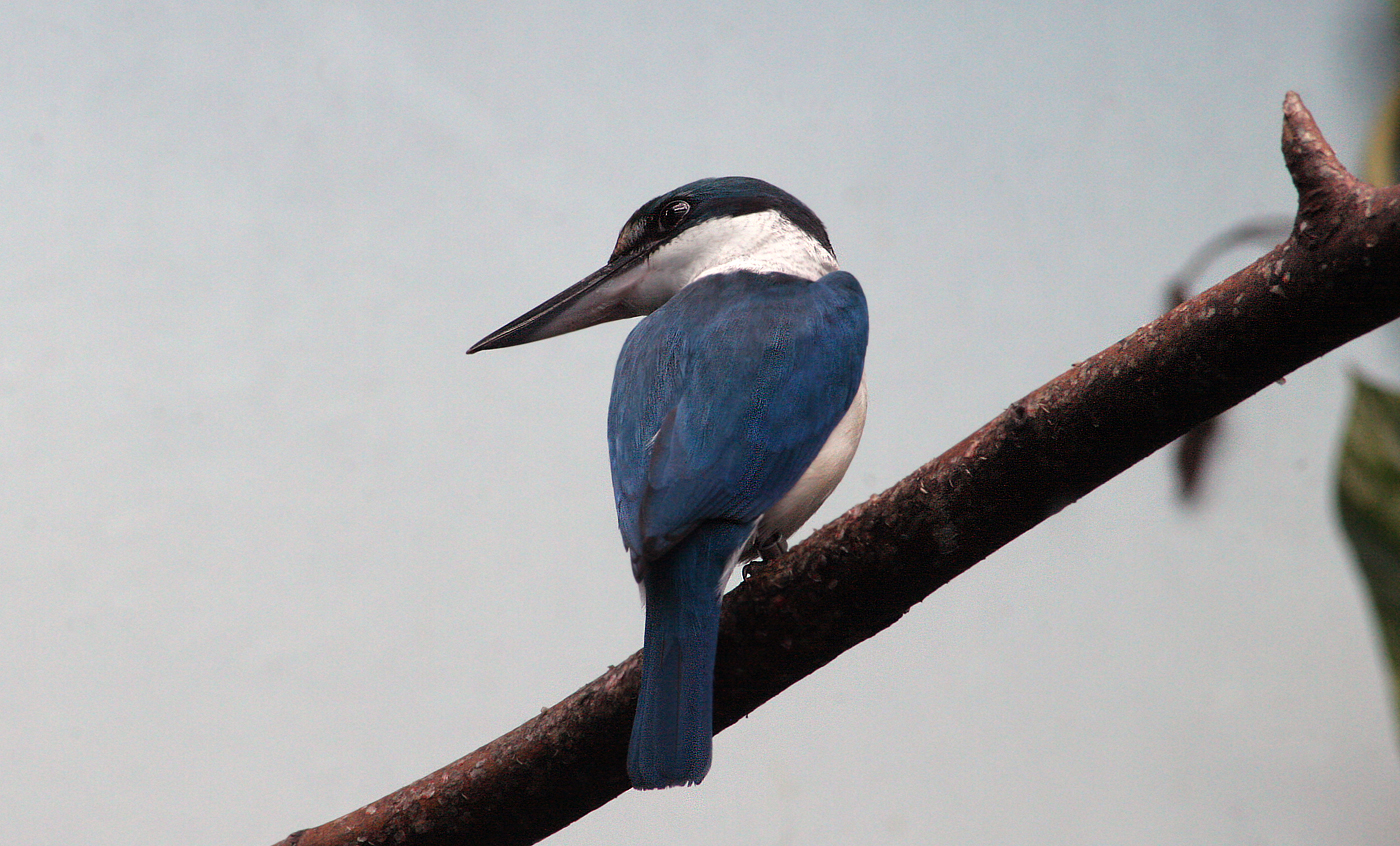Laughing kookaburra
The kookaburra, which grows up to more than 40 cm in length, is one of the largest examples of the kingfisher family. It lives in family groups on the savannah and in open forests in Eastern Australia. It has been introduced to Western Australia, Tasmania and New Zealand.
It feeds on small animals and makes its nest in holes in trees or termite nests. Its song sounds like human laughter and rises and falls in volume while all the members of the group join in with the chorus.
Natural habit
East of Australia

- Distribution / Resident
- Breeding
- Wintering
- Subspecies
Risk level
- Extint
- Extint in the wild
- Critically endangered
- In Danger
- Vulnerable
- Near threatened
- Minor concern
- Insufficient data
- Not evaluated
Taxonomy
Physical characteristics
Biology
Reproduction
Biology
The kookaburra, which can be over 40 cm long, is one of the largest representatives of the kingfisher family. Aesthetically, it is a very large bird, cream coloured all over except for the wings, which are a dark brown, and its tail, which is more cinnamon with lengthwise black bands. Its head is very large compared to its body and has a black strip running to its nape.
It lives in family groups in open savannahs and forests in eastern Australia, although we can also find them in Western Australia, Tasmania and New Zealand, where it has been introduced. It is frequently found near human settlements.
It feeds on invertebrates and small vertebrates, such as fish, amphibians, reptiles and small birds, which it hunts by hiding on a branch or elevated position.
The laughing kookaburra forms stable pairs, which can be for life, making its nest in holes in trees or termite mounds, where it lays two to four eggs that both members of the pair incubate for 24 to 26 days. While raising the chicks, the progenitors often receive help from young birds from a previous clutch, which also help to defend the territory.
The song, heard most at dawn, sounds like laughter, with the volume rising and falling, with all members of the groups joining the chorus. It is a sedentary bird that makes short movements within its area of distribution, generally depending on the abundance of food.
Due to its sociable nature and ease at adapting to populated and quite humanised areas, it is not endangered in the majority of its distribution area.






